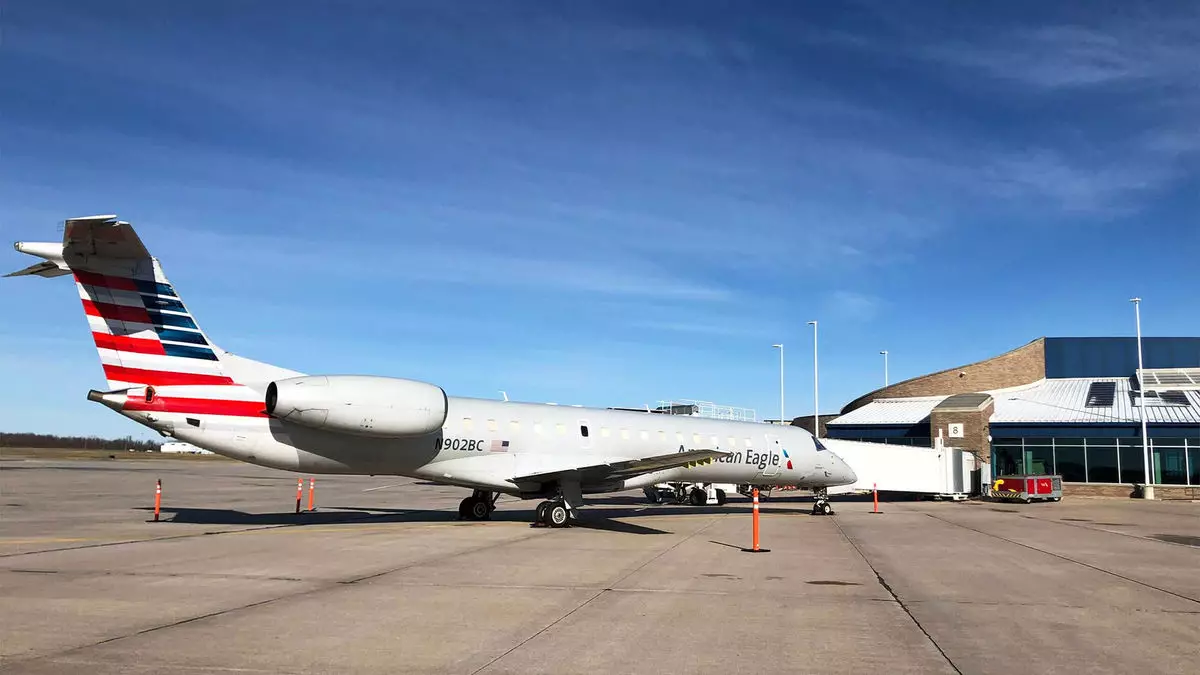Like many small airports across the United States, Appleton Airport in northeast Wisconsin faced significant challenges following the pandemic. As the aviation industry grappled with a widespread pilot shortage, major airlines including American, Delta, and United had to ground a substantial number of regional flights. The impact was felt heavily in smaller cities, where air service often relies on a limited number of carriers and routes. However, as the industry begins to stabilize and recover, Appleton has emerged as a noteworthy exception, showcasing how small markets can bounce back.
This past June marked a pivotal moment for Appleton Airport as American Airlines launched its inaugural direct flight to Dallas-Fort Worth. This flight not only represents a new connection to a major hub but also signifies a recovery trend in air travel for the region. Appleton gained an additional route to Charlotte over the past year, reflecting a renewed commitment from American Airlines to invest in regional service. Furthermore, both United and Delta have increased their regional flight frequencies, indicating a collective effort to enhance air service in smaller markets.
To understand Appleton’s recovery, it is crucial to examine the data. Between October 2021 and October 2023, the city experienced a significant 31% reduction in major airline flights alongside a 22% drop in available seats from those airlines. Against this backdrop, it’s astounding that the flight count from leading carriers has recently rebounded to 92% of pre-pandemic numbers. The data cleverly reveals that not only have the airlines restored significant flight operations, but they have also switched to deploying larger regional jets. Consequently, the number of available seats has surpassed pre-pandemic figures by nearly 6%.
Remarkably, in just one year, Appleton has witnessed an impressive 33% increase in major airline frequencies. This includes additional service from American, which has made smart moves to adapt to market demands. Delta’s increased flights to critical hubs in Minneapolis and Detroit, along with United’s expanded routes to Chicago O’Hare, illustrate an impressive tactic to strengthen regional connectivity. Jesse Funk, the airport’s air service and business development manager, speaks to the burning desire for better accessibility: “For business travelers, reaching their destinations is now notably easier, and the same holds true for leisure travel,” he commented, underlining the importance of robust airline offerings.
While Appleton’s success is remarkable, it mirrors a broader trend seen across various small and medium-sized communities throughout the United States. Airlines are gradually overcoming the acute pilot shortage that had previously hindered the restoration of regional flight services. Recently, American Airlines reported a 14.9% increase in regional flights compared to last year, while United and Delta followed closely with increases of 13.9% and 9.8%, respectively. This marks an encouraging resurgence in the sector, with an optimistic outlook for future growth.
Delta’s president Glen Hauenstein expressed confidence during a recent earnings call, predicting that cargo capacity for regional flights will reach its full potential by next summer, thus reflecting a significant recovery over the prior operational challenges. United, in a similar vein, highlighted its full utilization of the regional fleet, signaling an increasing commitment to enhancing their service portfolio.
Despite the upswing, it is important to discern that regional air travel in the U.S. still remains below pre-pandemic levels. Long-term strategies adopted by major carriers are favoring more lucrative mainline aircraft over regional options, leading to an overall reduction in the percentage of regional flights. For instance, when comparing October 2023 to October 2019, the three major carriers collectively planned to offer 25% fewer regional flights.
The Regional Airline Association has voiced concerns about the sustainability of this recent growth trend. Difficulties persist as smaller airports struggle, with a reported 65% of U.S. airports experiencing a decline in service compared to levels seen in 2019. Furthermore, lingering uncertainties loom large as another pilot shortage could surface once mainline deliveries normalize.
Although Appleton Airport has made significant strides, its officials remain vigilant in their pursuit of further growth. Funk’s statement, “We’re happy but still looking for more,” serves as a reminder that while recent achievements are commendable, the journey towards improved air travel connectivity is an ongoing process. With strategic efforts and the right partnerships, Appleton may well serve as a blueprint for revitalizing air travel in smaller communities struggling to regain their footing after the pandemic.
The success story of Appleton Airport illustrates not only the resilience of regional air travel but also highlights a significant step towards enhancing accessibility for millions of residents in smaller cities across the nation.


Leave a Reply